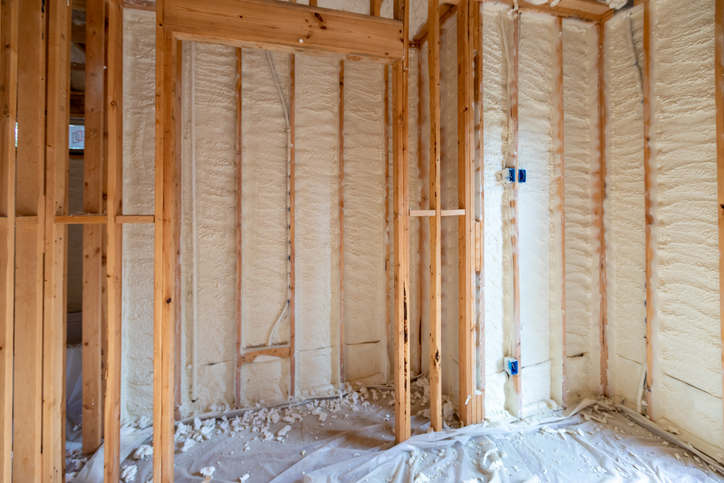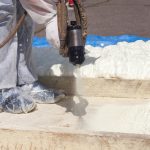Should You Use Closed-Cell Spray Foam for Your Application?
In both commercial and residential building projects, you must choose what kind of insulation you want to use. There are a variety of options out there, one of the most popular being closed-cell spray foam. But, how do you know what’s right for you? In this blog, we’re diving into the closed-cell option and comparing it with other popular insulation materials, like fiberglass, cellulose, and open-cell spray foam. Let’s get started.
What is Closed-Cell Spray Foam?
Closed-cell spray foam is a common type of polyurethane spray foam used for insulation purposes. Experienced professionals use specialized equipment to spray this foam directly into the building. From there, it expands, filling every gap with energy-saving material.
Unlike open-cell spray foam, closed-cell varieties have a compact cell structure that allows for higher R-values. As such, it’s a popular choice for applications that require robust energy efficiency.
Benefits of Closed-Cell Spray Foam
Saves Energy Through Powerful Insulation Properties
Closed-cell foam is a more powerful insulation option than others on the market. With an R-value per inch of 7, it effectively insulates both commercial and residential properties, saving money on energy costs. In fact, it has been shown to save anywhere between 30% to 50% on energy bills.
Deters Mold with Excellent Moisture Barrier
Because closed-cell foam is made of elastomeric foam, it won’t absorb moisture, which reduces the risk of mold growth. It can cost around $2.5 per square foot for mold remediation and removal, so opting for closed-cell foam in the beginning can save you money down the line.
Long Life Span
Spray foam has an average life span of about 80 to 100 years, which is longer than some materials—like cellulose. When you invest in closed-cell insulation, you won’t have to replace it as often, which can save you money in the long run. However, it is important to note that fiberglass and open-cell spray foam offer similar life spans.
Below-Grade Material
If you want spray foam installed in your basement or crawl space, you’ll need the closed-cell variety. Open-cell foam is not approved for below-grade use, leaving closed-cell as the only option.
How Does it Compare to Other Options?
Fiberglass
Fiberglass is made of a plastic matrix that’s reinforced with small glass fibers. It’s typically compressed into batts or blown directly onto the area that needs insulation. Fiberglass is usually cheaper than closed-cell foam; however, you will likely save more money in monthly energy costs using closed-cell options. Fiberglass is also more prone to moisture absorption, which increases the risk of mold in your property.
Cellulose
Cellulose is an insulation material made of recycled paper fibers, which are usually treated with fire-retardant chemicals. It’s not as long-lasting as closed-cell foam, as it needs to be replaced about every 20 to 30 years. It’s also not as moisture resistant, which can increase the risk of mold.
Open-Cell Spray Foam
Open-cell spray foam is similar to closed-cell. It’s made up of polyurethane and a blowing agent, creating a porous structure filled with tiny air bubbles. Closed-cell insulation does have a higher R-value, meaning it provides better insulation properties. However, open-cell foam allows for better sound-dampening qualities and greater flexibility at a lower cost.
Considerations and Limitations for Closed-Cell Spray Foam
Closed-cell foam is typically more expensive than other options, which could put a strain on your budget. Additionally, this kind of foam will provide some form of sound dampening, but it’s not designed to offer soundproofing benefits.
How Do You Get Started?
Are you considering closed-cell foam for your next project? If so, you may be wondering how to get started. Turning to an experienced polyurethane equipment manufacturer—like Linden Polyurethane—is the first step. Since 1985, we’ve been helping businesses like yours get the right polyurethane equipment and mix heads to fit their needs. We’d be honored to help you do the same. Already have equipment? We can help you repair any products, even if they’re from another manufacturer.
Over the last few decades, we’ve successfully pioneered many polyurethane innovations and refined the tools and equipment used by countless industries. Today, we regularly design and manufacture all types of polyurethane metering, processing, distribution, and storage systems in-house.
Let’s Get Started
Curious to know how we can help you reach your goals? Contact our team today.





